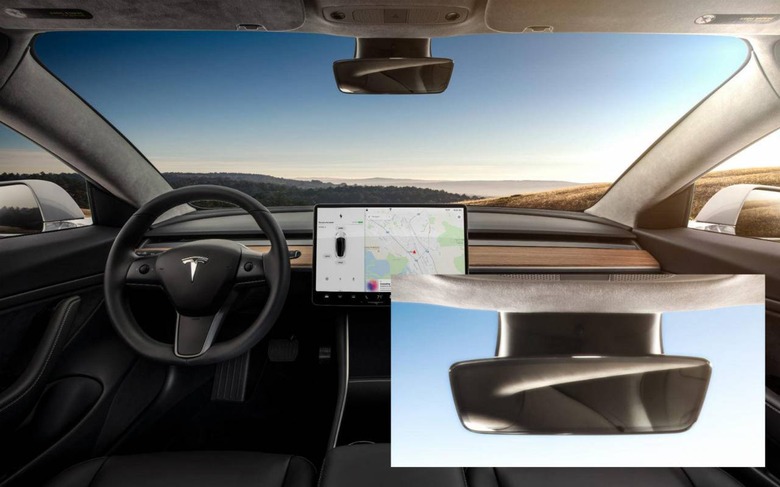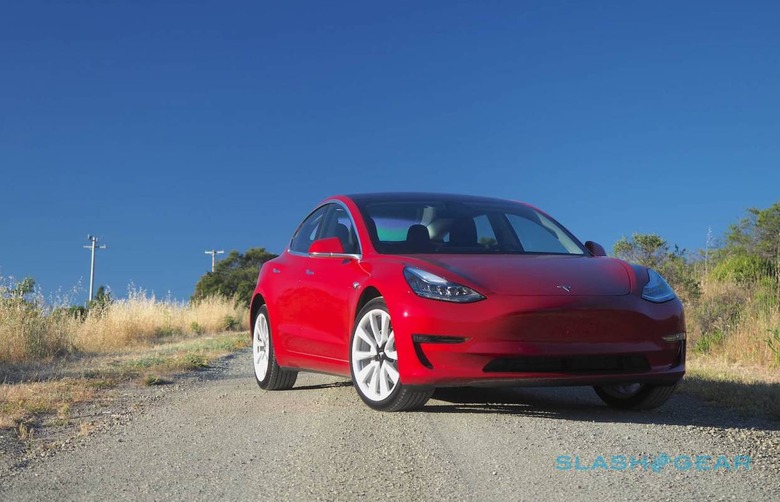Elon Musk Spills The Model 3 Cabin Camera's Secrets
Tesla has confirmed just what the interior camera in the Model 3 is for, with Elon Musk revealing how the sensor will play into the electric automaker's future roadmap. The camera is positioned up above the rear-view mirror inside the EV, facing into the cabin rather than out of it.
It was spotted shortly after the Model 3 was unveiled back in mid-2017, in high-resolution interior images of the car. At the time, Tesla wasn't saying exactly what it might be for – or, indeed, talking about the camera's specifications – though that didn't stop the speculation.
One possibility that was suggested was that Tesla could use the camera for an attention-based monitoring system for Autopilot. Much as Cadillac's Super Cruise relies upon a camera tracking the driver's gaze, to make sure they're giving sufficient attention to the road ahead, Autopilot could use a similar system to allow drivers of the Model 3 to take their hands off the wheel, it was theorized. However, the positioning of the camera – looking down into the cabin rather than up from the steering wheel – suggested that might be difficult to implement.

Another suggestion was that Tesla planned to use the camera to monitor the cabin when people other than the car's owner are inside. Indeed, that turns out to be the case, with Tesla CEO Elon Musk confirming that the automaker plans to enable it for the eventual autonomous rideshare system he wants to launch.
"It's there for when we start competing with Uber/Lyft & people allow their car to earn money for them as part of the Tesla shared autonomy fleet," Musk explained on Twitter to a Model 3 owner expressing concern about the privacy implications of the camera. "In case someone messes up your car, you can check the video."

Tesla's goal of building a shared autonomous fleet raised eyebrows back in 2016, when Musk outlined the so-called Tesla Network in his "Master Plan Part 2" for the company. Owners of the automaker's cars could elect to have them take part in a ridesharing service, autonomously driving to a pickup location and then acting as a taxi alternative while the owner didn't require their vehicle. Of course, for that to happen, Tesla actually needs to finish up its self-driving technology, and regulators need to approve autonomous car services on the road.
That's not to say the camera need go unused until then. While Musk confirmed that it's currently inactive, unlike the exterior cameras, the cabin camera could "be used to supplement cameras on [the] outside of [the] vehicle, as it can see through 2nd side windows & rear window," the CEO explained. Whether that would allow it to augment the current Autopilot system – which relies on cameras, ultrasonic sensors, and radar – or for something else remains to be seen.
